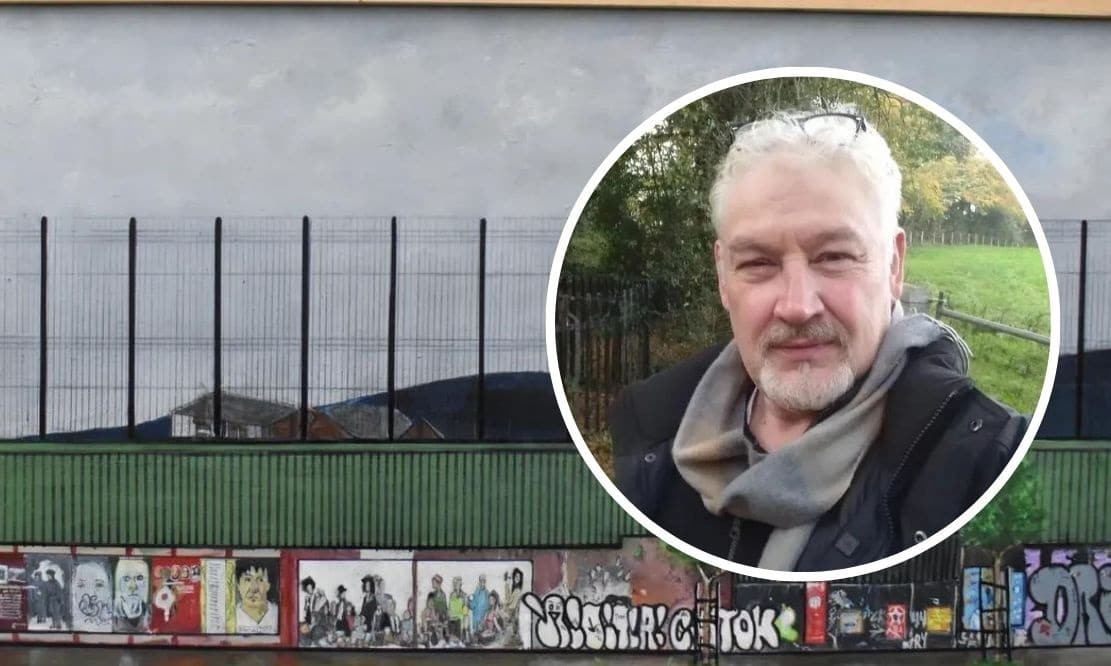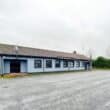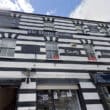
A Bessbrook-based artist is in Armagh to display his 30 ft tall painting of how the Peace Wall on Cupar Way in Belfast looked prior to the graffiti being removed in 2019.
Bruno Patron, who was a graffiti artist as a teenager in London, became fascinated by the assortment of art on the Peace Wall in 2017.
He became frustrated that the entire wall was not visible in one view, which inspired him to paint an accurate depiction of the way it looked prior to August 2019.
Bruno is showcasing his Cupar Way painting, alongside his wider Troubles-themed portfolio, in the Market Place Theatre and Arts Centre in Armagh from Monday, July 22 to Saturday, September 7.
The exhibition is being run in conjunction with the John Hewitt Society, an organisation set up to provide opportunities for individuals to explore issues of identity and difference through literature, arts and culture.
One of Northern Ireland’s most popular tourist destinations, the Cupar Way Peace Wall was the first to be built in Belfast during the Troubles, to separate the Protestant and Catholic communities amid serious violence.
The half-a-mile long wall remains in existence to this day, and is covered with murals and graffiti.

One of Bruno’s pieces that will be on display at the exhibition
Bruno’s representation is one in which he endeavoured to paint it in its “entirety and accurately”, but without taking any political sides.
“My painting is now the only artistic rendition of the entire wall in existence today as to how it looked like prior to August 2019’s act of destroying years of the Wall’s artistic and political history,” he says.
“My interest in the Peace Wall is an artistic one – I was a graffiti artist as a teenager in London, and I have loved and enjoyed graffiti ever since.”
A student of Fine Art at Wimbledon Art School and Gloucestershire University from 1979 to 1983, Bruno spent 25 years of his career in the telecommunications industry, before setting up his own business in restoration in 2011.
“I do not hold any political, sectarian or social viewpoints about the Peace Line’s existence – to me they are first and foremost blank canvasses for everyone to express themselves upon. I am not lost in how these Peace Walls came into being and respect that people who live in their shadow have personal reasons for wanting them there.”
Added Bruno: “I intend to take the Peace Wall painting around Ireland for the next few years, then decide where to go globally in two to three years’ time.
“The Peace Wall painting is being exhibited for the first time and I am delighted to show the painting at the Market Place Gallery in Armagh.”





